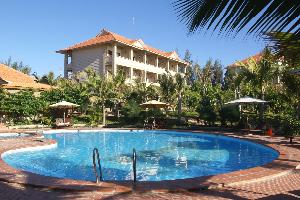 One of the productive segments that has the highest energy consumption, the hotelier, will be the subject of analysis in this column by the author, who welcomes the numerous initiatives that this industry is carrying out to reduce it.
One of the productive segments that has the highest energy consumption, the hotelier, will be the subject of analysis in this column by the author, who welcomes the numerous initiatives that this industry is carrying out to reduce it. By: Alfredo Sotolongo*
Among the types of buildings that consume the most energy per square meter, which are not industries, are hospitals and hotels. Today I want to refer to hotels, since many hotel chains have been unleashed in recent months to design new hotels and / or remodel existing hotels. The most interesting and hopeful thing is that they are taking energy consumption very seriously.
Almost 80% of the energy consumed by a hotel is distributed between indoor air conditioning, hot water, lighting and ventilation. The percentage that corresponds to each of these factors depends largely on the weather conditions in the place where the hotel is located. All these consumptions are controllable to some extent with the exception of refrigeration because it is vital for the preservation of food and many hotel owners prefer not to include it.
I am pleased to learn that many hotel owners and their consulting engineers have decided to use variable volume in the central air conditioning plant that includes the coolers, primary cold water pumps, condensation pumps and fans of the cooling towers. In this way, they operate the entire plant based on the consumption of Kw.-hour per ton of cooling and maintain the minimum desired consumption by modulating all the components of said plant through frequency inverters using the algorithm of the Hartman Loop system of the Armstrong company. This has shown that when all plant components are modulated in unison, consumption of up to 0.30 Kw.-hour per tonne can be achieved at partial loads.
In addition, by adding the intelligent building control system (BMS), energy recovery from the exhaust air and the preventive maintenance recommended by the manufacturers, the additional investment is recovered in approximately 2 years. Once the additional investment is recouped, the annual savings are much greater than the interest banks would pay today on that additional investment.
What unfortunately some hotel chains have not paid much attention to is the control of guest rooms. A very high percent of the energy waste from air conditioning and lighting are the guest rooms, as some leave the room and leave all the lights on and the thermostat at temperatures outside the comfort range making the HVAC system work longer than necessary.
The main argument that some tell me is that they do not want to affect the comfort of the guest. However, there are systems, which without affecting the comfort of the guest, help to avoid wasting energy in the rooms.
Another argument that they tell me, when it comes to remodeling, is the wiring of the components to read temperature and detect movement in the rooms. Which, during the installation, does not allow the use of the room affecting the profitability of the hotel. There are some companies that have developed wireless communication systems specially designed for application in remodeling with excellent results minimizing the time in which the room is not available and with returns on investment of 2 to 3 years maximum.
With the rampant and steady increase in the cost of energy and the new systems being developed, very soon the time of return on additional investment to implement such systems will be greatly reduced. For this reason, I recommend to the engineers who design air conditioning systems for hotels that they do not stop analyzing the possibility of using controls to avoid the waste of energy in the rooms and I am sure that they will be able to justify the additional investment to the owner.
*Engineer Alfredo Sotolongo, president of Protec, Inc., is certified as a professional engineer in Puerto Rico and the State of Florida; has more than 40 years of experience in the application and sale of systems and equipment for energy conservation. He is a member of ASME (American Society of Mechanical Engineers), AEE (Association of Energy Engineers), with whom he is certified as an Engineer in Energy Management; he is also a member of ASHRAE and was president of the Miami chapter of that association. He has also presented numerous talks on the subject of energy conservation.













